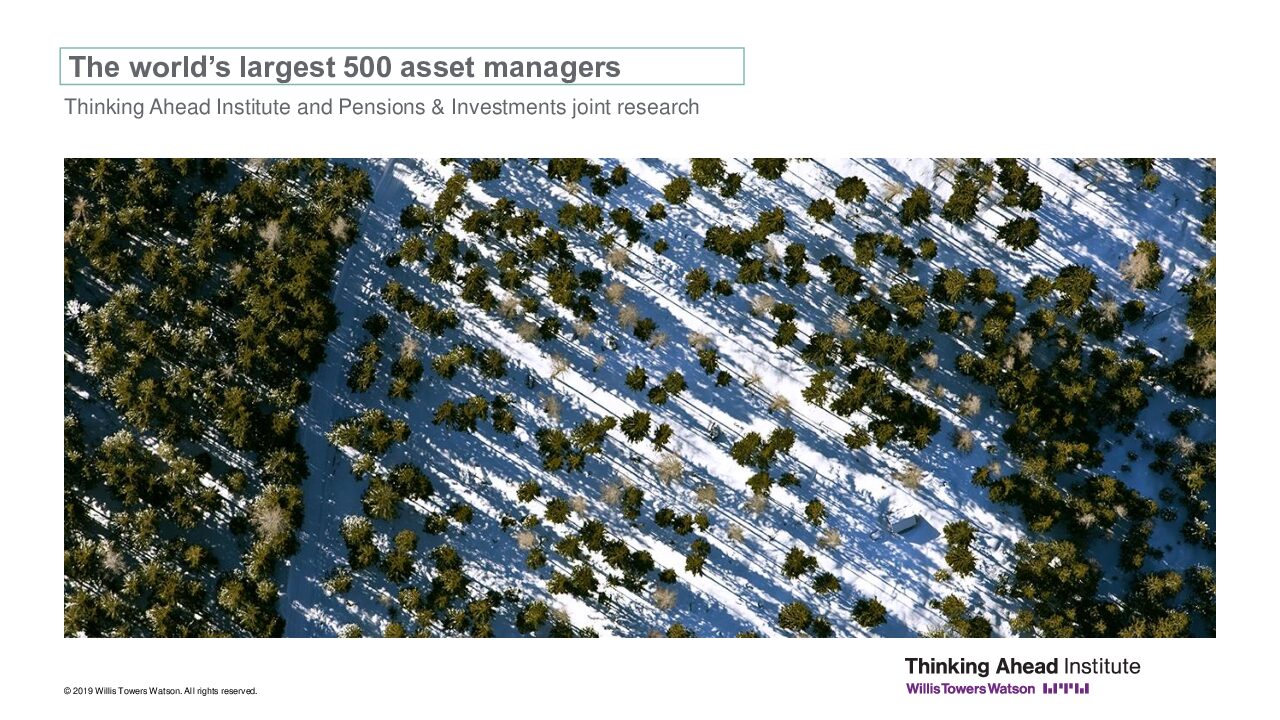Highlights – the numbers
- Total discretionary Assets under Management (AUM) of the 500 managers included in the ranking amounted to US$ 91.5 trillion at the end of 2018, down 3% from the end of 2017. Median AUM was US$ 45.6 billion in 2018, up from US$ 44.0 billion last year.
- BlackRock has retained its position as the largest asset manager in the ranking since 2009. For the fifth consecutive year, Vanguard and State Street complete the top three.
- AUM growth by region ranged from -4.9% in North America to 17.9% for the rest of the world category. Europe experienced a decline of 3.9%.
- The top 20 managers’ share of the total assets decreased from 43% in 2017 to 42% in 2018. Their total AUM decreased by 4.8% to US$ 38.6 trillion.
- U.S. managers gained a member in the Top 20, T. Rowe Price. There were 13 U.S. managers in the Top 20, accounting for 72.6% of the total AUM. The rest were European managers.
- Out of the Top 20, half of them were independent asset managers, followed by banks (7) and insurer-owned managers (3), the same as last year.
- Traditional asset classes of equity and fixed income continued to make up the majority of assets: 78.0% of all assets (43.6% equity, 34.4% fixed income), experiencing a decrease of 5.6% during 2018.
- Passive investments have declined by 3.4%, under the backdrop that all major equity indices experienced negative returns over 2018.


Key industry-wide observations
- Investment is a fast-changing industry: some 242 names in our 2008 list of 500 largest asset managers are not in our 2018 list.
- The last ten years have been a fairly benign environment for asset managers: rising markets and strong margins. Most observers expect disruption in the coming years, with greater pressure coming from fee compression, the high cost of technology and regulatory activity.
- Sustainability has become an unavoidable issue. As the talk on this front turns into action, the leading firms will be the ones who manage to close not only the saying-doing gap, but also the doing-impact gap, which is the shortfall between the desire for a more sustainable economy and the ability to create it.
- There is growing appreciation of the importance of culture to the effective practice of investment organizations. Connecting the dots from culture to strategy, to beliefs and values, and to vision and mission, has become a critical leadership challenge and opportunity. A stronger underlying purpose – beyond the pursuit of growth and profit only – can be a strong differentiating factor in a crowded industry facing a challenging environment.

